Refresh
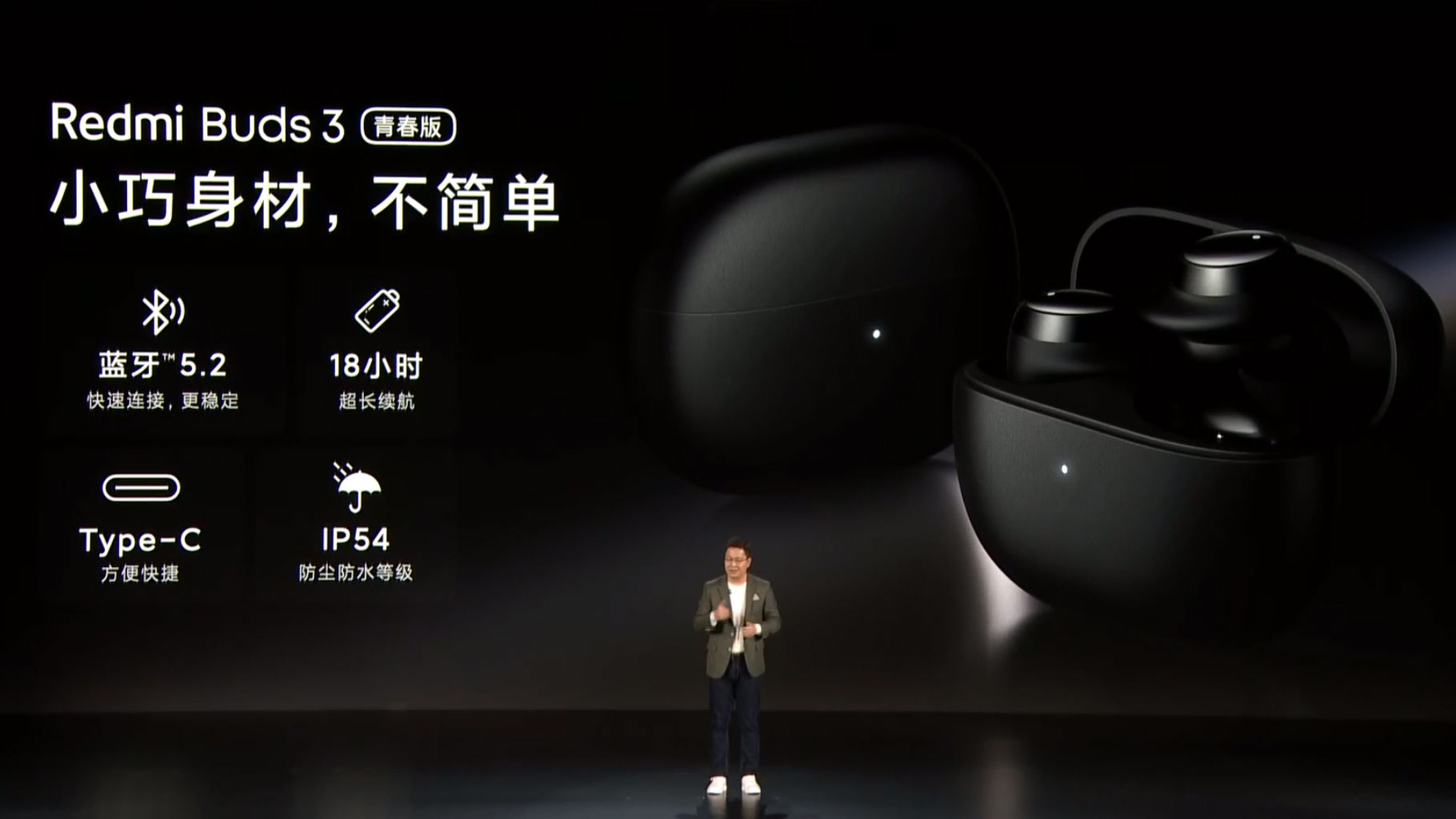
There are some new earbuds too, costing CNY99 (about $15, £10, AU$20). That’s a startlingly low price, they can’t be that great – right?
Again, Xiaomi launches loads of earbuds in China that never make their way to a global market, so we don’t know if we’ll ever get to test them.
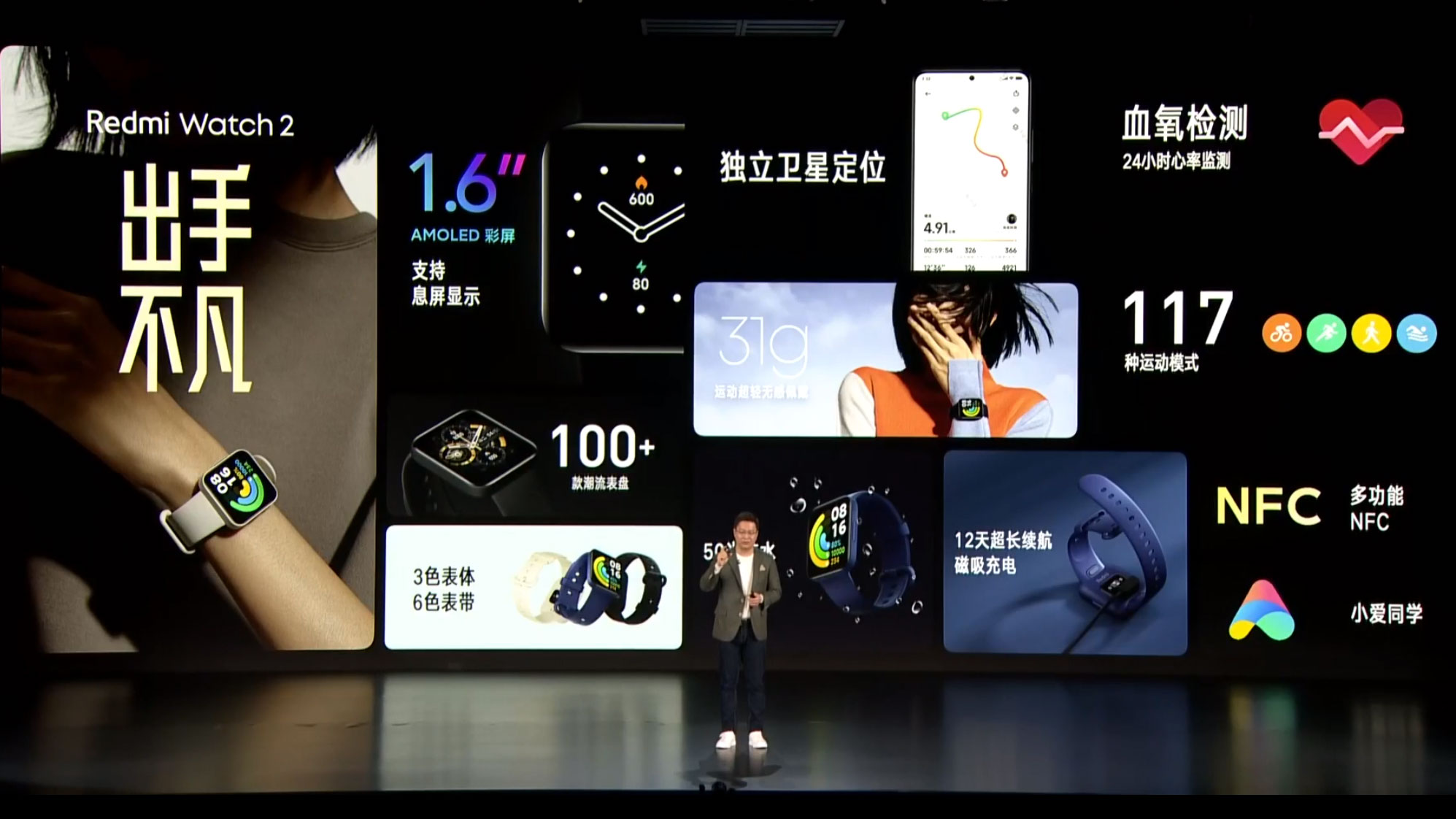
Here’s a full specs list for the Redmi Watch 2.
Nothing particularly stands out here beyond the huge number of sports mode, but ‘quantity’ isn’t the same as ‘quality’ so we’ll have to test it to see how well it works.
Either way, that’s a super low price.
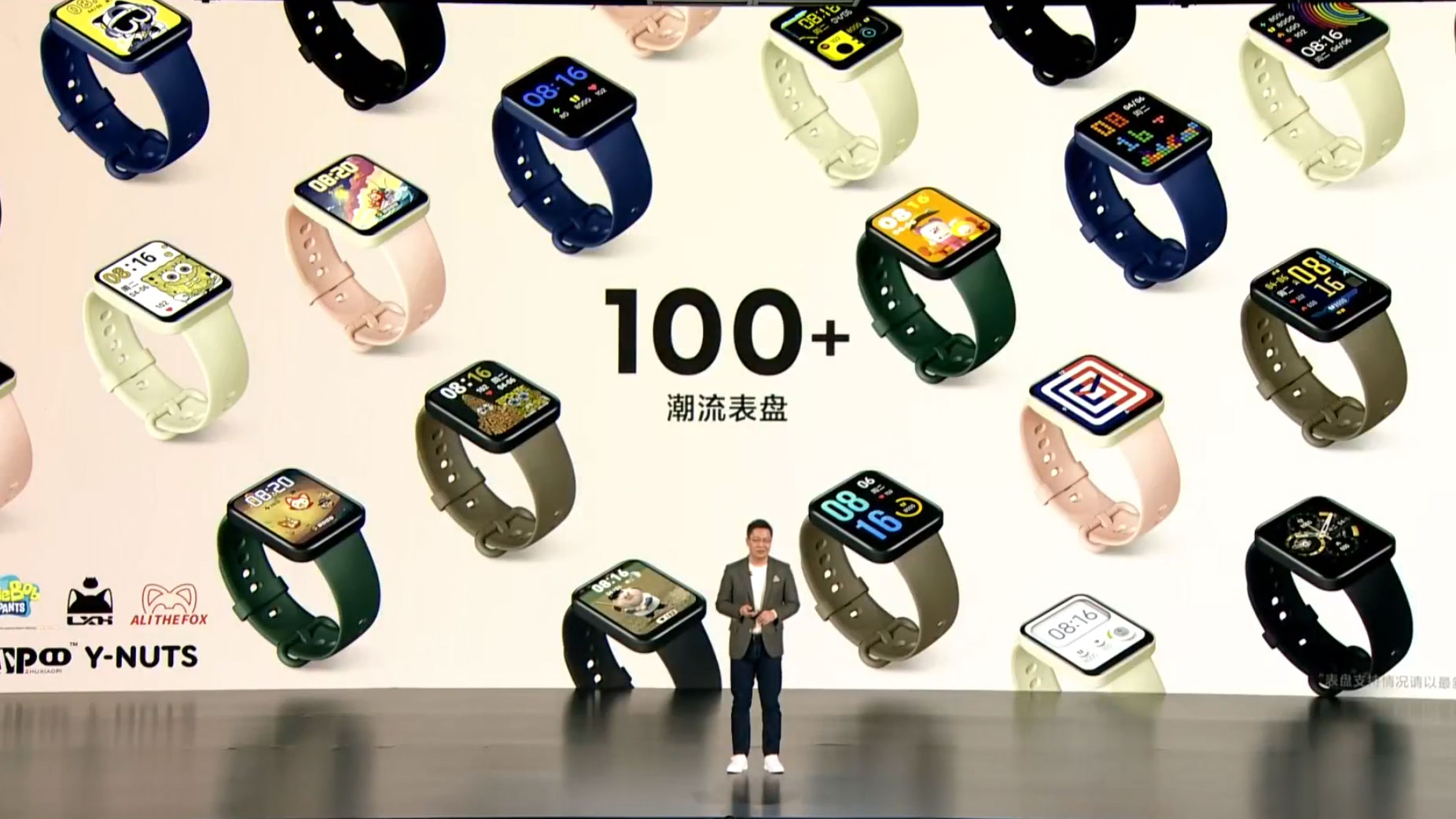
The Redmi Watch 2 costs CNY349, which converts to just $50, £40, AU$70 – we’re not clear on whether this will come to global markets though, as the original didn’t.
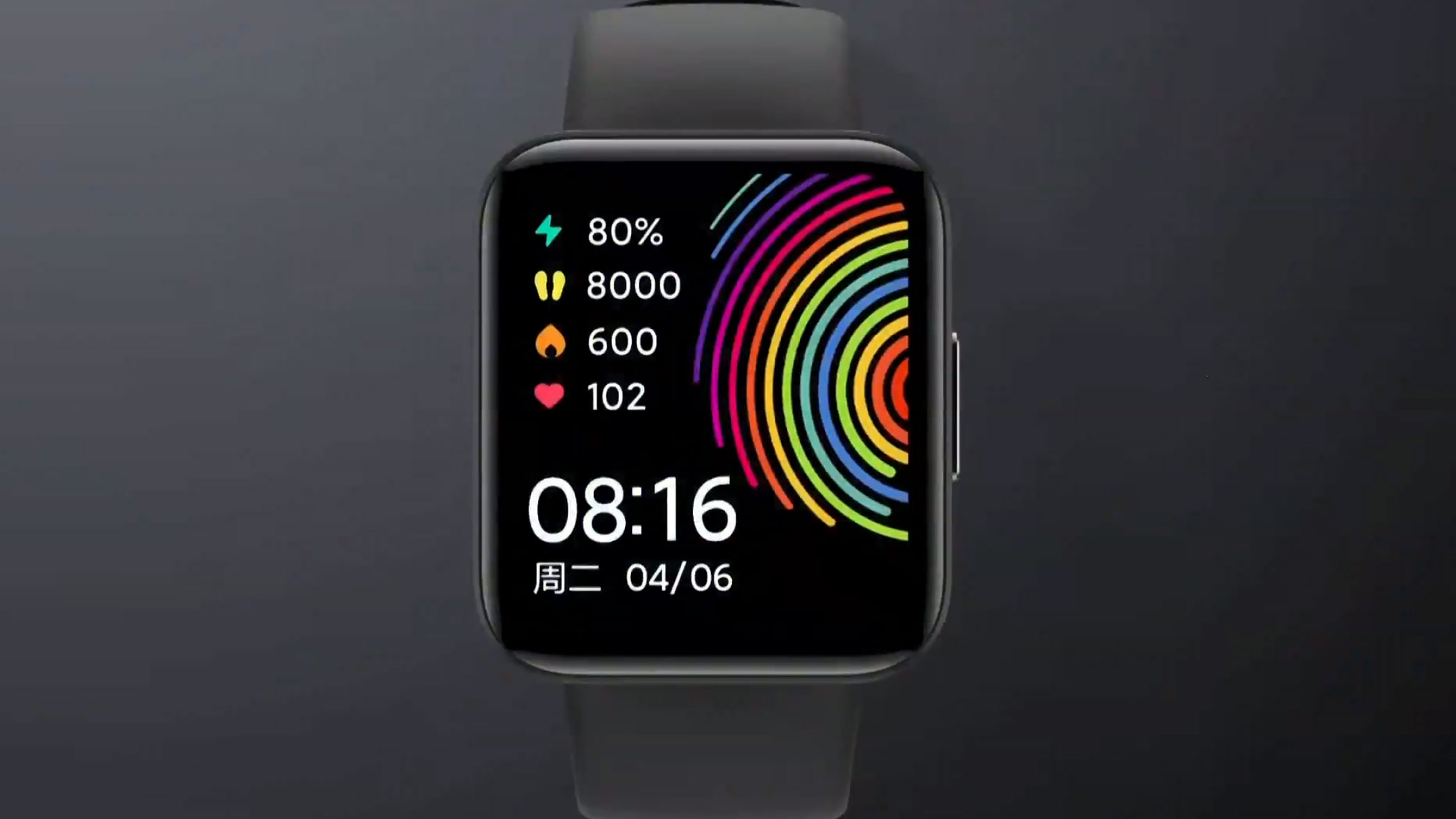
The party’s not over yet though – the Redmi Watch 2 is here.
Apparently this budget watch has 5ATM protection, built-in GPS (as the original) and 117 sports modes (way more than the 11 in the original).
It’s a fairly good-looking watch, and there seem to be plenty of color options.
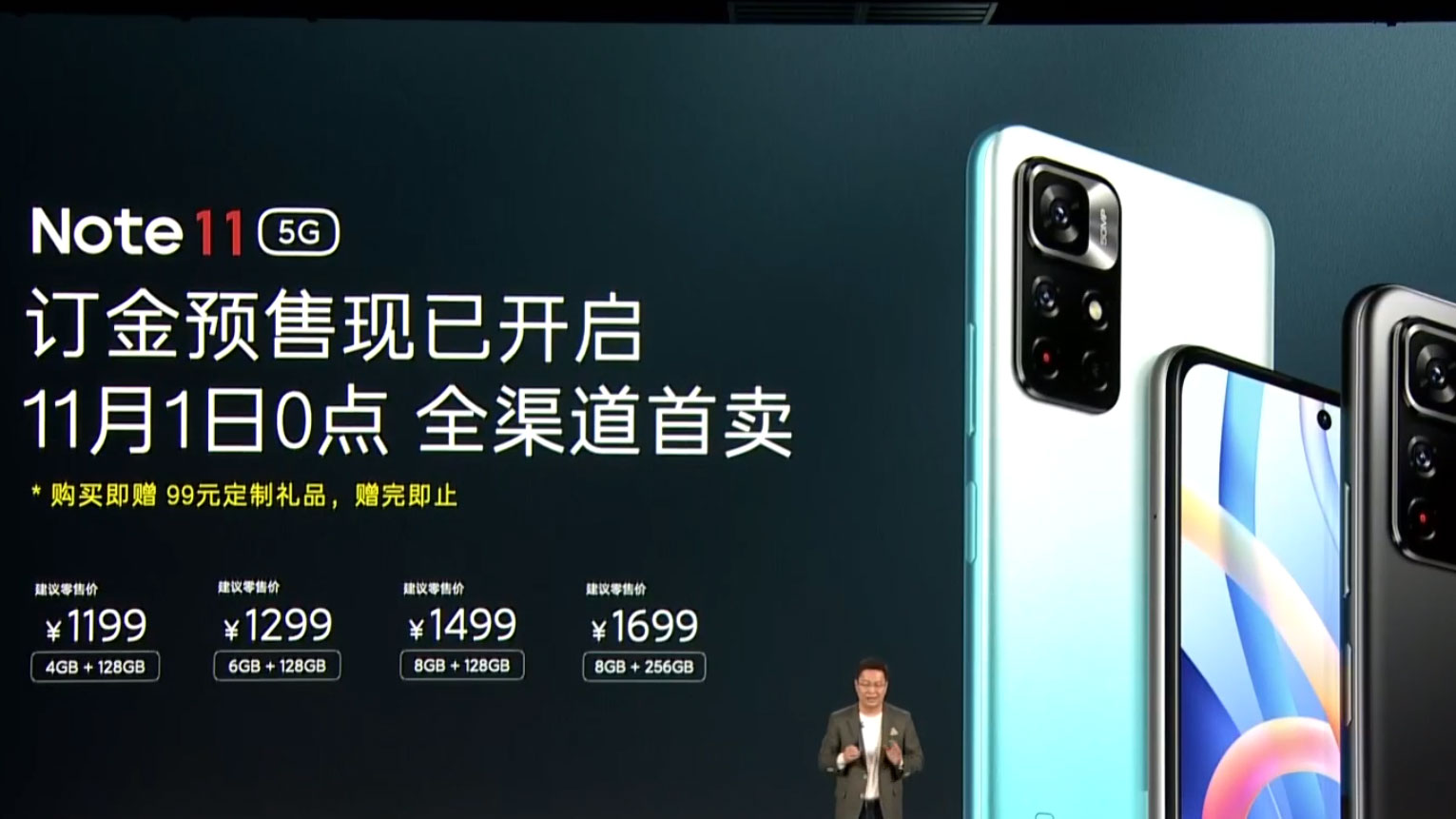
A few more detials about the Note 11 have been shared. It’ll have a 50MP main camera joined by an 8MP ultra-wider, as well as a 16MP selfie camera.
The phone will start at CNY1,199 for 4GB RAM and 128GB storage, options which will increase up to 8GB RAM and 256GB storage. That intial price costs $190, £140, AU$250, which is supremely low.
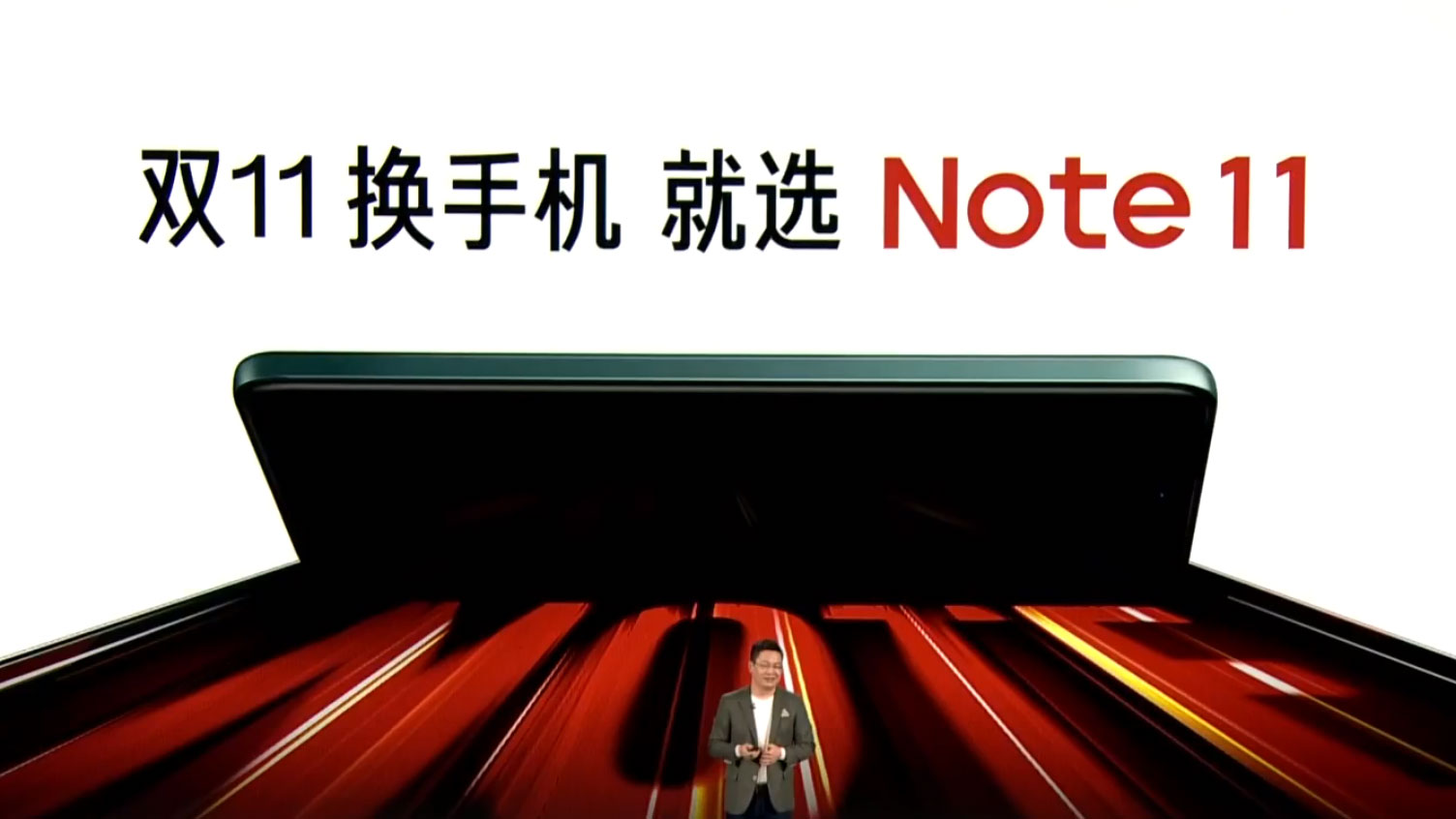
Finally, we’re onto the standard Redmi Note 11 Pro.
It’ll be a 5G phone, showing that the entire family will be (unlike the Note 10 devices). Its screen will have a 90Hz refresh rate, it’ll have a 5,000mAh battery and will come with 128GB storage. The chipset is the MediaTek Dimensity 810, the charging speed is 33W, and it’ll come in a wide range of colors.
There’s a 3.5mm headphone jack here, and the phone has an IP53 rating.
Wow, Xiaomi just sped through the details of the phone – did they make a new land speed record?
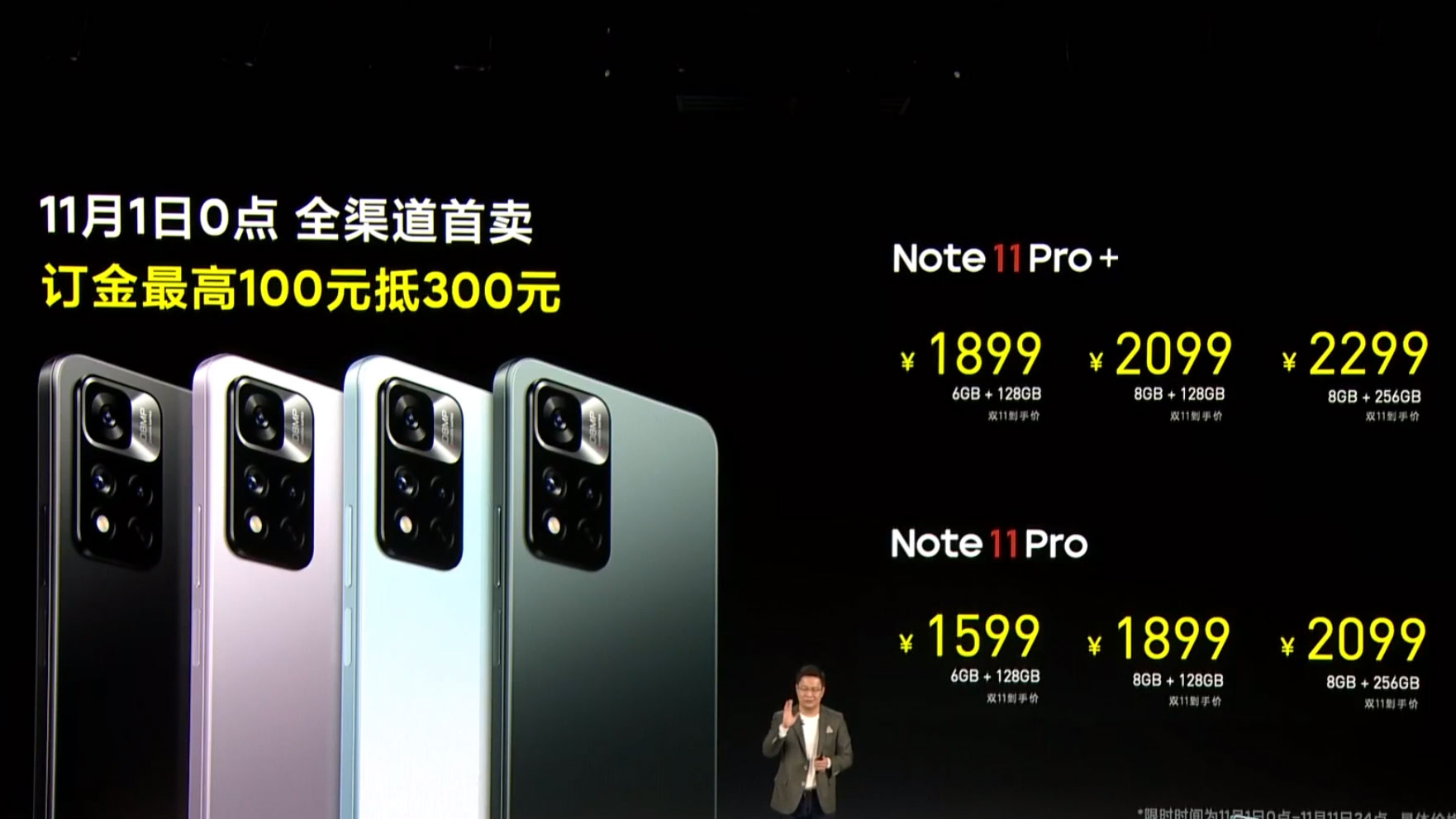
Apparently the Redmi Note 11 Pro Plus costs CNY 1,899, which converts to about $300, £220, AU$400 – it sounds like the only difference between it, and the non-Plus device, is the charging speed and battery. Oh, and there’s no paleish blue option.
Prices for both phones go higher, but as we said, they likely don’t reflect how much the handsets will cost in global regions.
Oh, and the Pro Plus might not launch in too many regions.
The event has been going for an hour now, and still no mention of the standard Redmi Note 11.
That doesn’t mean it doesn’t exist, it just means it’s absolutely not the priority for Xiaomi. The event’s not over though, as we know some wearables are still coming – stay tuned and hopefully it’ll break cover soon (or as soon as we press ‘publish’ on this post).
Xiaomi is comparing the specs of its Note 11 Pro to a series of other devices, and showing how the Redmi beats them all.
Curiously, so far, Xiaomi has only compared itself with Honor devices, and no other rivals from Realme or the like.
We’ve also heard a price: CNY 1,599 for 6GB RAM and 128GB storage which converts to about £180, $250, AU330, though global prices could be quite different.
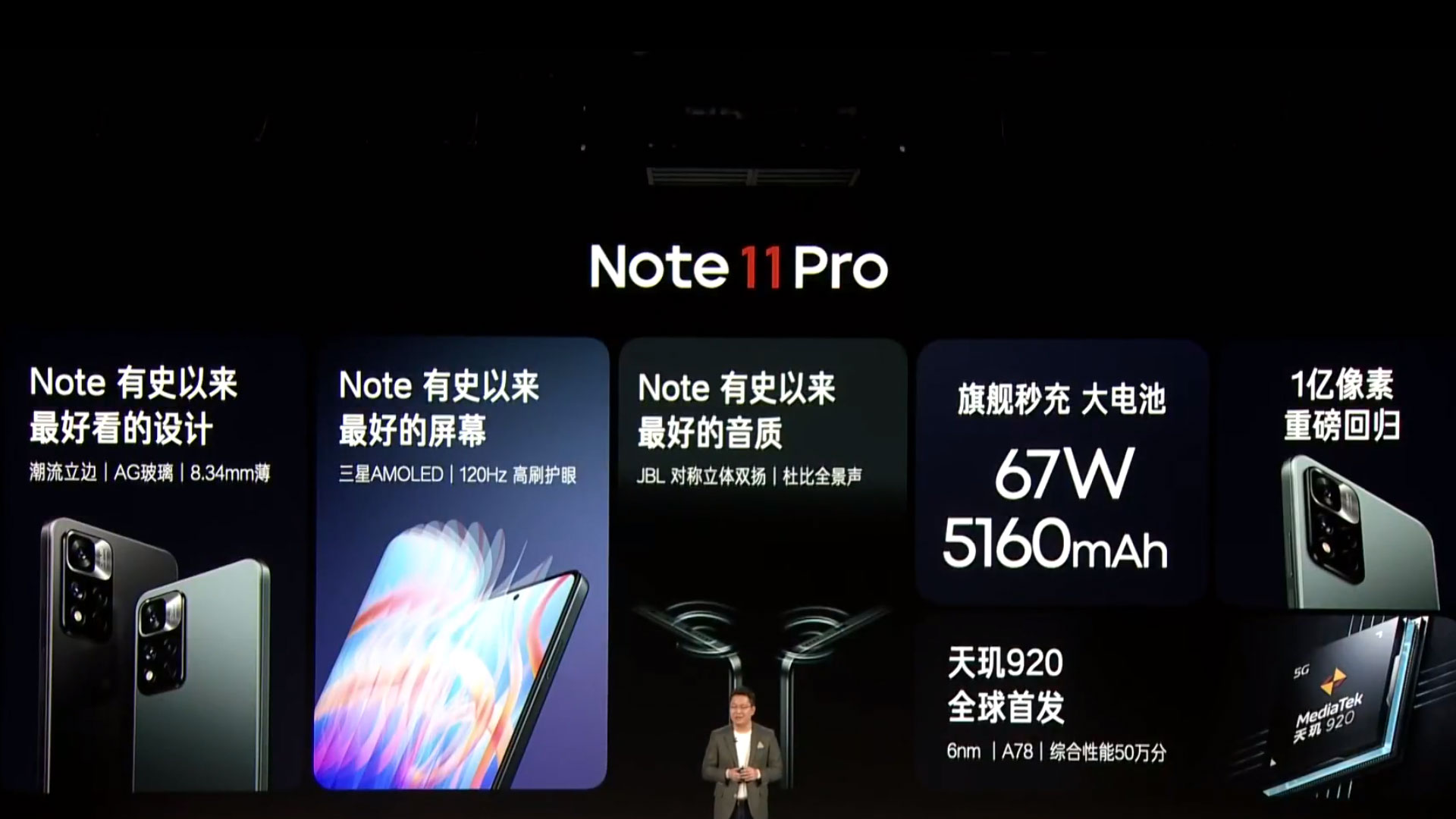
Scores on the doors: what do we know about the Redmi Note 10 Pro so far?
The phone will have a 5,160mAh battery with 67W charging. Its screen is 6.67-inches big and uses AMOLED tech with 120Hz refresh rate. The front-facing camera in a cut-out is very small.
The main camera here is 108MP, though there are more snappers we haven’t heard about. The audio is tuned by JBL and the chipset is the MediaTek 920, which means the phone is 5G connected.
Xiaomi is wrapping up its section on the Note 11 Pro by the sounds of it, suggesting we’re moving onto the standard model now.
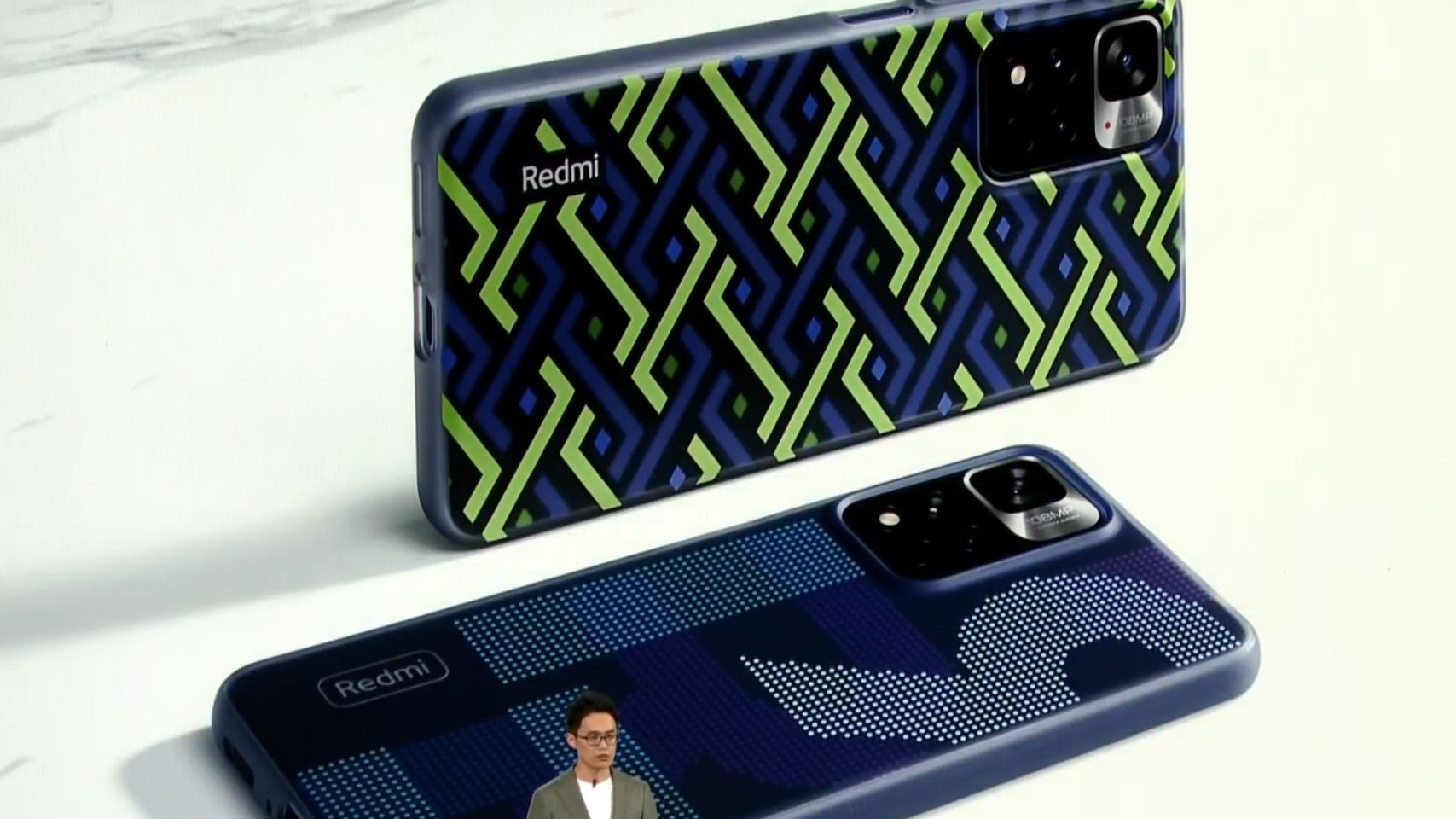
Now we’re seeing some cases for the Redmi Note 11 Pro.
They look nice, but we’d rather hear about the Note 11 itself.
Phone brands often do this – spend most of a launch event detailing the top-end handset instead of the ‘vanilla’ one – but the cheaper option often ends up as the better-value one anyway.
Next up, performance – we’re hearing how the Redmi Note 11 Pro is using the MediaTek 920 chipset.
Even Xiaomi admits this isn’t as powerful as the Snapdragon 778G it’s used for other cheap phones, but according to a graph, it’s not far behind either. Perhaps this could be a sign the phones will be cheaper than the Redmi Note 10 devices.
However the Note 10 phones weren’t 5G models (apart from the Note 10 5G) so instead, we could see 5G across the board for the Note 11 devices.

Now they’ve moved into discussing the Redmi Note 11 Pro camera in more details – they’re showing the 108MP camera for use in portrait shots.
Apparently it’s a f/1.89 snapper with dual IOS. We’ve seen some portrait and landscape shots that look great, though these could have been edited after being taken.

Many phone brands get audio companies to tune their speakers, like how Samsung users Harman Kardon, and sometimes it works really well, but other times it feels more like a marketing ploy.
Xiaomi used Harman Kardon for its Xiaomi Mi 11, so it’s interesting to see it move to another company for Redmi devices.
It’s very hard for phone brands to demonstrate the quality of their mobile’s audio at a launch event, and this is no exception.
Showing some people in a choir singing doesn’t exactly tell us how good the speakers are, even if there’s some guy in a jumper dancing to them. Apparently Xiaomi missed this memo?
Redmi has confirmed that the Note 11 phones’ speakers have been tuned by JBL.
We asked TechRadar’s resident audio expert, Olivia Tambini, for the low-down on this big audio brand.
“JBL has a great reputation when it comes to audio, with its iconic floorstanding speakers becoming popular additions to home hi-fi systems in the 1970s. Since then, the company has branched out into headphones, wireless earbuds, and Bluetooth speakers. Generally, the company’s products are well-tuned, with dynamic and punchy soundstages. Of course, this doesn’t translate to every JBL device, and some of its cheaper headphones and speakers are lacking in detail and clarity.”
The Redmi Note 11 Pro will have dual speakers, so one at the top and one at the bottom, which should improve quality when playing games or streaming movies and TV.
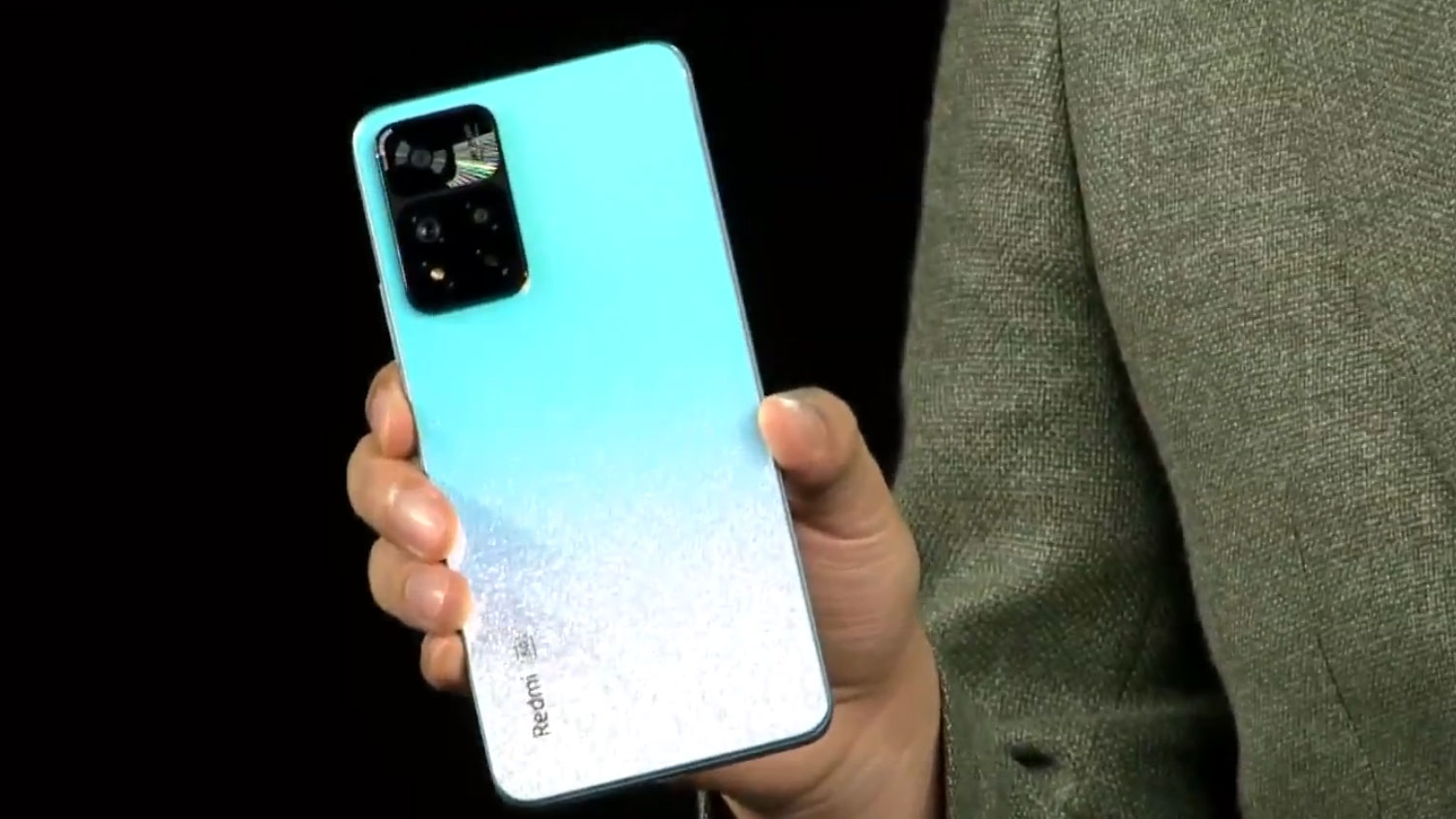
We’re seeing the phone in the flesh.
Apparently the Redmi Note 11 Pro will have a 6.67-inch AMOLED display with DCI-P3 colors, a blue light filter, a front-facing camera in a cut-out with a 2.96mm size and bezels less than 2mm thick.
That front-facing camera truly does look tiny, and it definitely won’t take up much screen space.
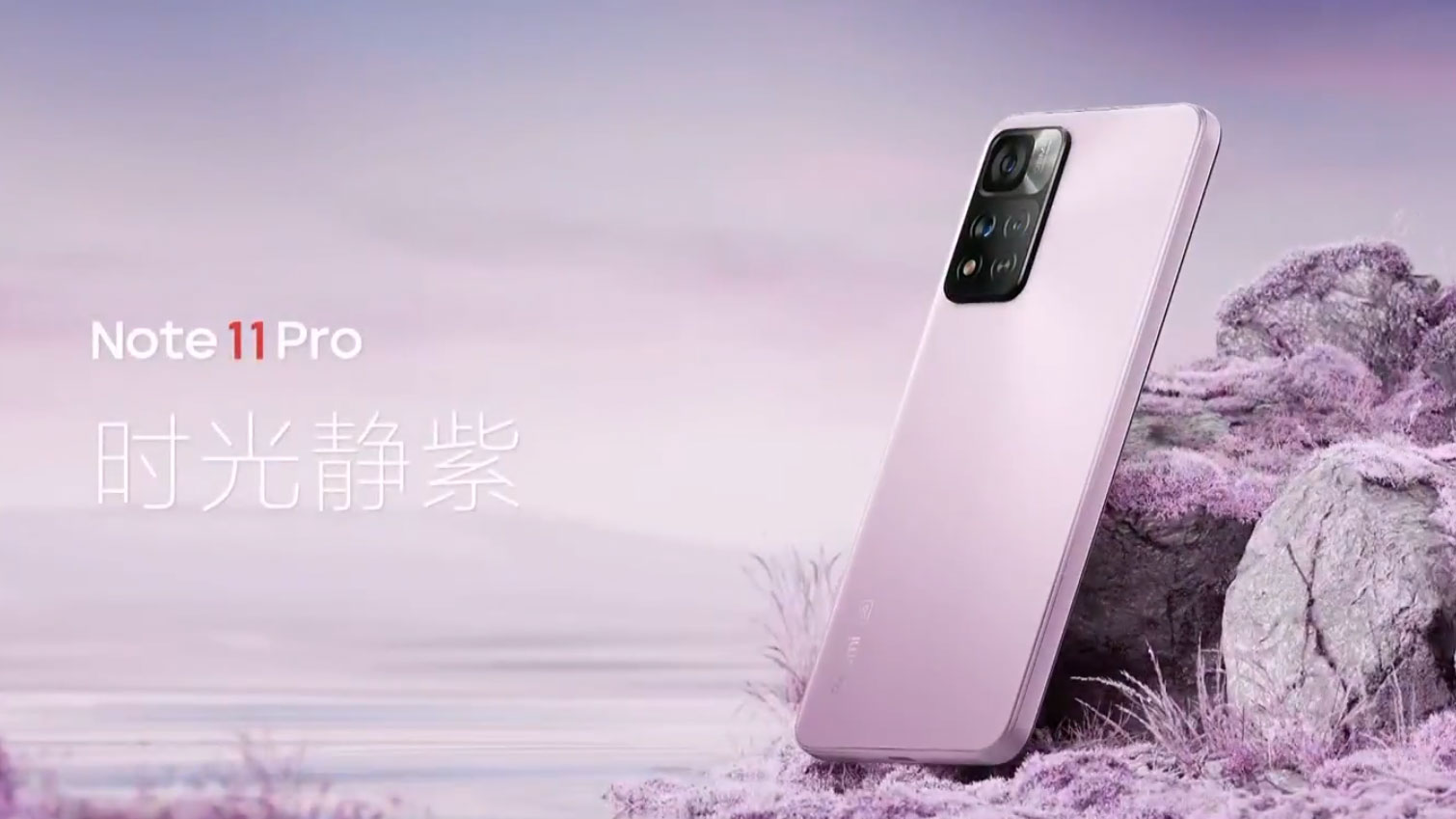
Now that’s what I call a pink phone.
We’re seeing different versions of the Redmi Note 11 Pro including a green one, a black one, a blueish violet one, and the pink one you can see above.
As you can guess by the fact we shared this image, the vibrant pink one is our favorite, though that’s as much because the others are dull, or have just been used in too many phones before.

No points for guessing the Redmi Note 11 Pro’s camera specs any more, not with that giant 108MP logo there.
We also see two more lenses, a depth sensor and an LED flash.
Apparently the back of the phone also has anti-glare glass.
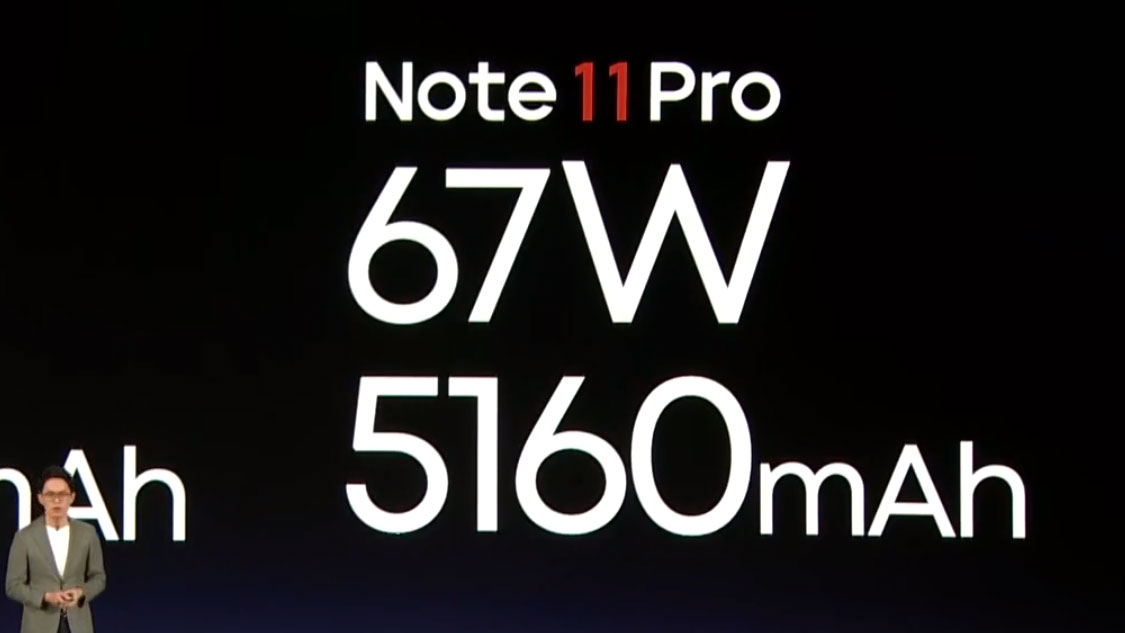
Note 11 Pro information: it’ll have a 5,160mAh battery and will power up at 67W. That’s a promising battery size for a smartphone, as anything above 5,000mAh is generally great, and the charging speed will be more than enough for most anyway.
The Redmi Note 11 Pro Plus will have a 8.34mm thickness, which apparently makes it the thinnest phone with this kind of charging speed and battery size.
We’d like to know what the actual battery life is though – it’s no use having super-speedy charging if you need to power the device multiple times per day. This kind of lasting power depends as much on optimizations in software, as physical battery size.
Oh, and the phone will ship with a charger in the box apparently.
Wow, they’re really going on about the Note 11 Pro Plus’ 120W charging. Admittedly it’s very fast, but we’re keen to hear about the charging speeds (and everything else) about the Note 11 and Note 11 Pro.
Admittedly, we’re saying this to jinx it – every time we write in live blogs saying ‘they haven’t announced X’ they go ahead and announce it, just to spite us.
The Redmi Note 11 Pro Plus will get 120W fast charging along with a 4,500mAh battery. We’re seeing a trailer where a person gets into a super-cold tub of water and sits there, while the phone charges.
Apparently the device charges to full in the time in the same time that you can hold your breath – as long as you’re a superhuman breath-holder.
It took just 15 minutes to charge to full though, which is genuinely impressive.
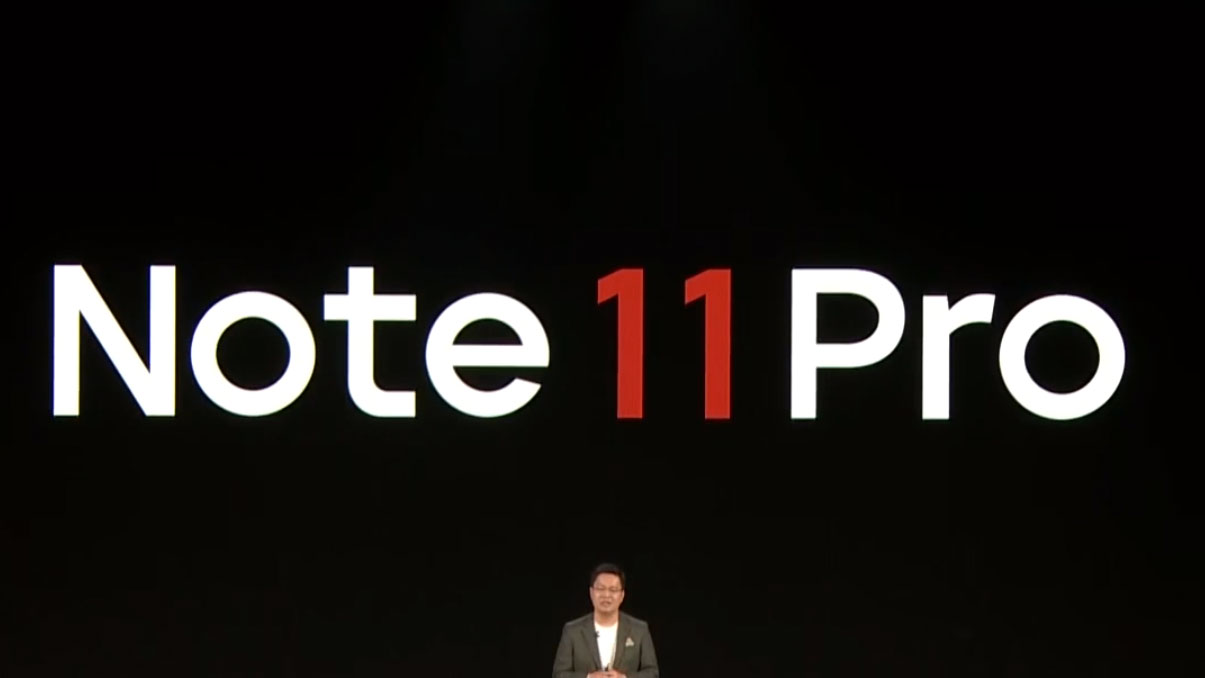
Here we go – we’re diving into details on the phone.
Surprisingly, there’s a Note 11 Pro Plus, with 120W fast charging like on the Xiaomi 11T Pro. Based on past performance, this might not get a global launch, at least not under the Pro Plus name.
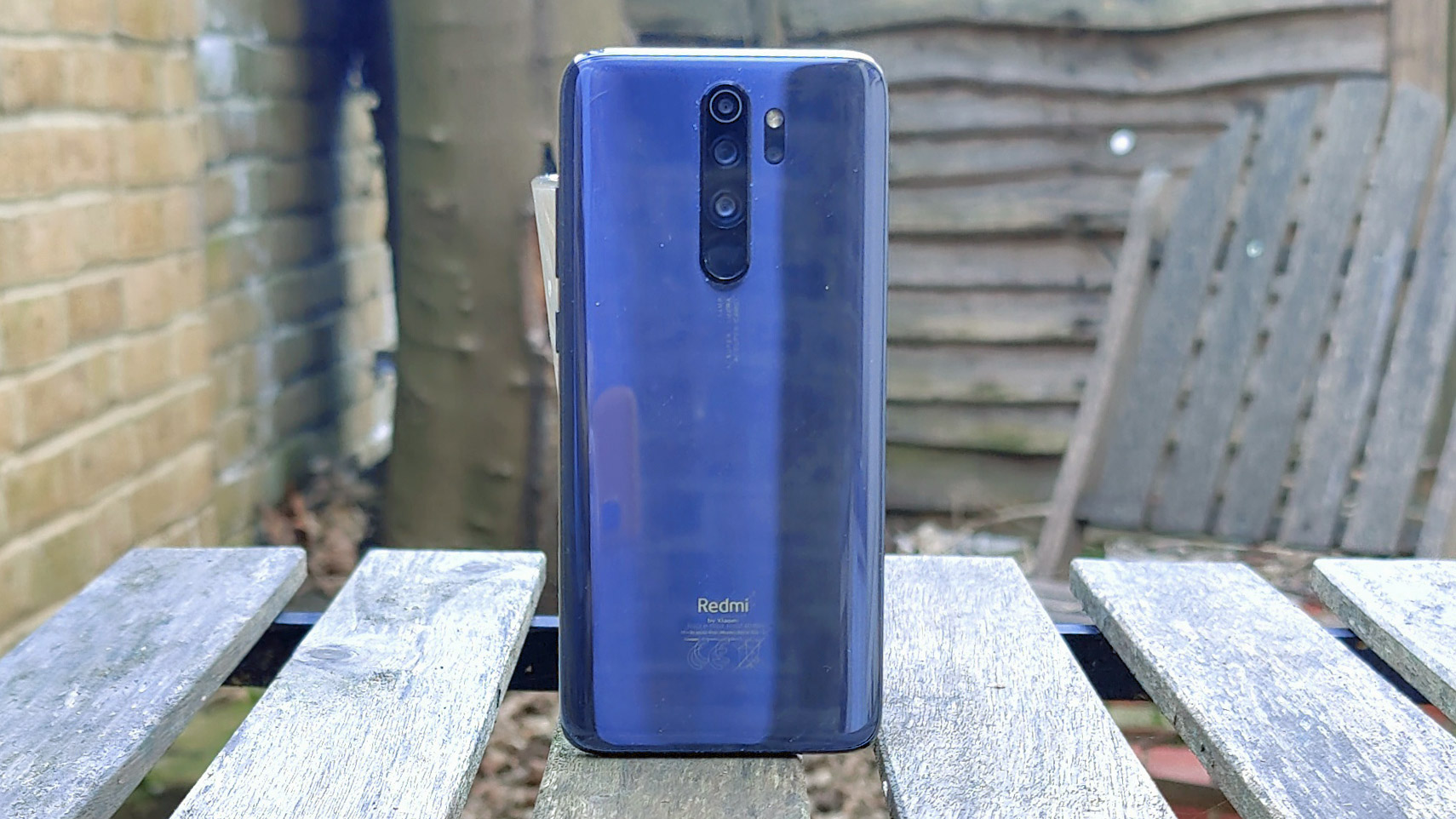
Since Redmi is now giving a history of its Redmi Note phones, I’m going to do the same.
Pictured above is the first Note phone I tested (if I remember right), the Note 8 Pro, back from when the brand wasn’t nearly as big in my country as it is now.
That phone definitely didn’t have JBL-tuned speakers, a 108MP camera or a powerful mid-range processor, as we’re expecting the Note 11 devices to get.
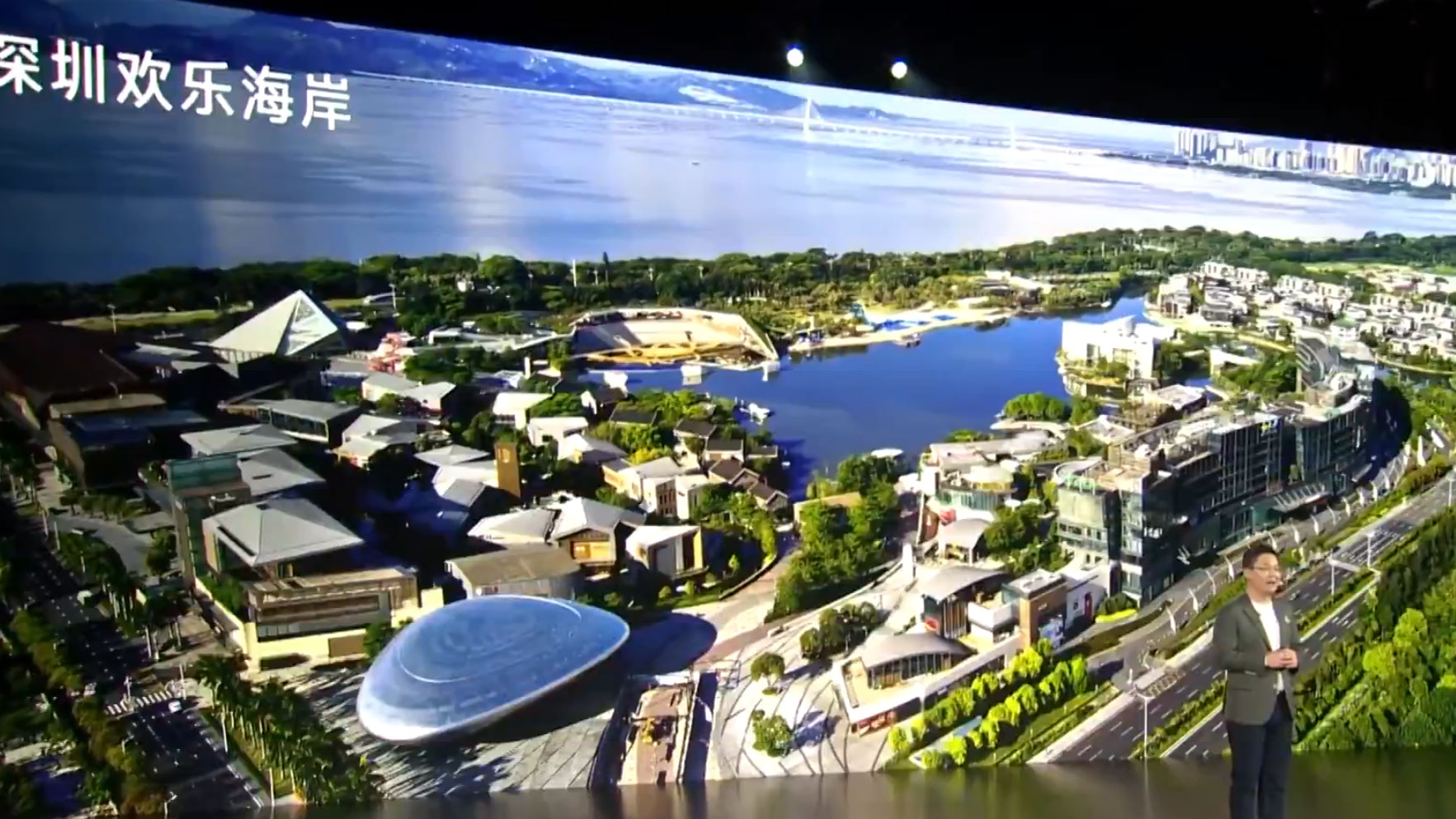
We’ve just seen an image of the Xiaomi Redmi campus, and it looks more like a Caribbean holiday resort than a work space.
Is that a lake in the middle? TechRadar HQ doesn’t have a lake in the middle (well, sometimes when I do a tea run and drop the tray it does, but that doesn’t really count).
This is just more talk about the company, and not about the new phones. We’ve seen people from the brand talk for half an hour before at other events, before showing off tech, so if you want to check your texts now is the time.
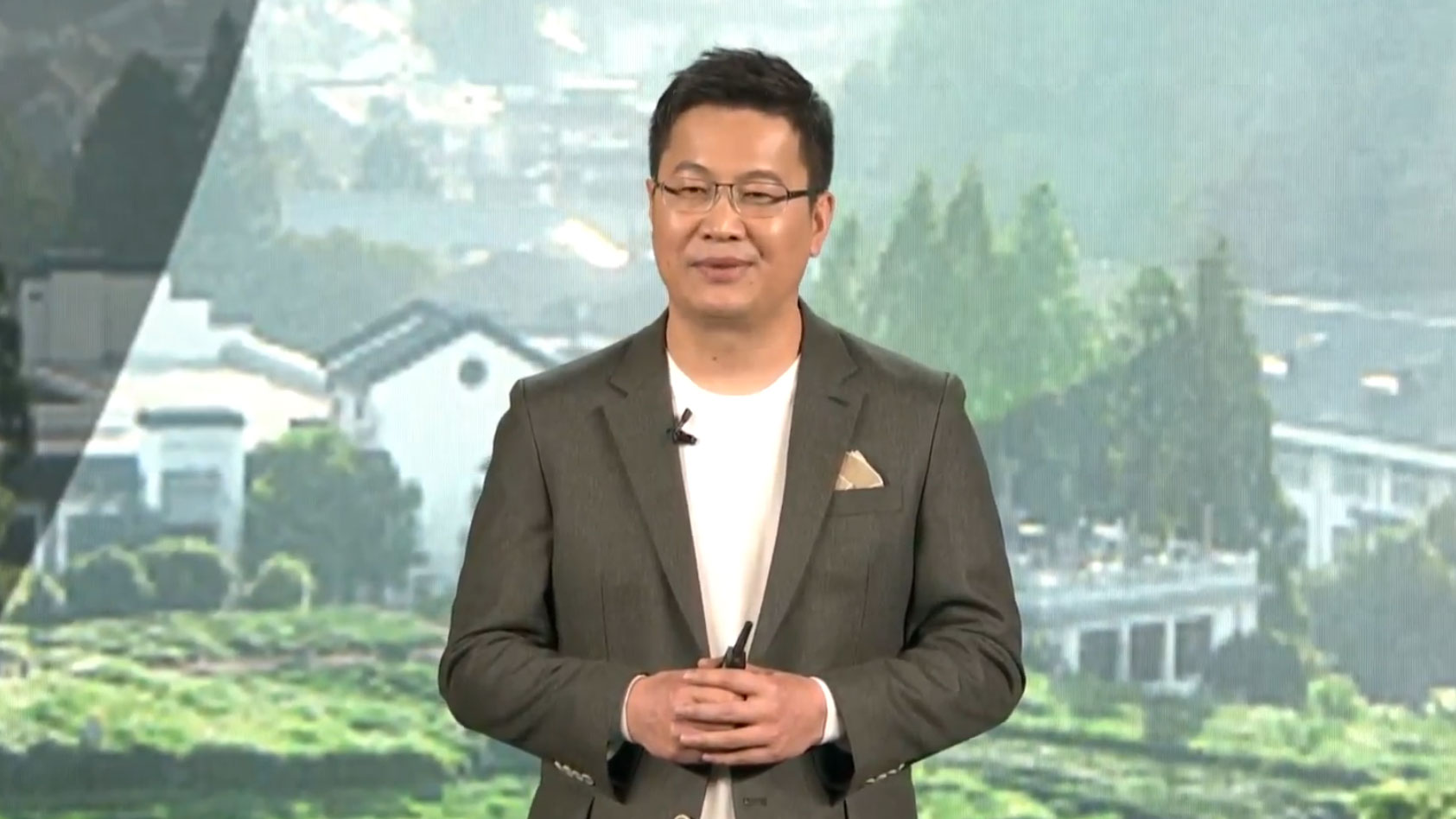
And here’s the pre-amble we warned about: Xiaomi is just discussing its brand and history at the moment.
People who watch these Xiaomi events a lot might recognize that piano music in the background, and it’s because the company has used it many times before. It sounds rather Minecraft-esque.
And it begins!
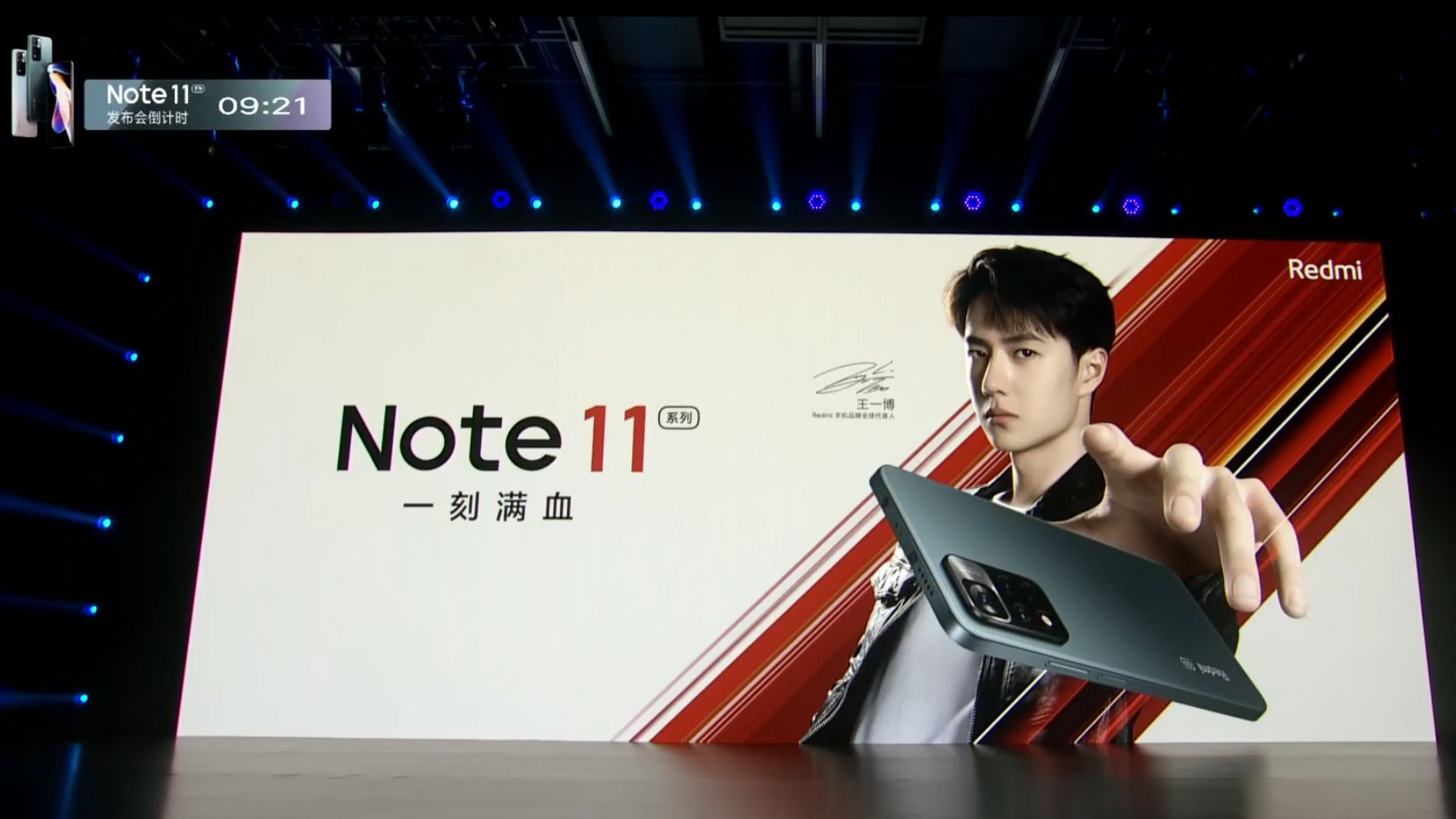
Five minutes to go until the event starts, and all the quirky trailers for Redmi and Xiaomi products have stopped. Now’s when you need to quickly make a cup of coffee and a sandwich before the real event begins…
… wait, I knew I forgot to brew somthing!
As per most tech events, we’ll likely see quite a pre-amble before the phones and wearables are shown off, as the company discusses its history and its place in the mobile market. So if you still need to make a coffee, you’ll have time.
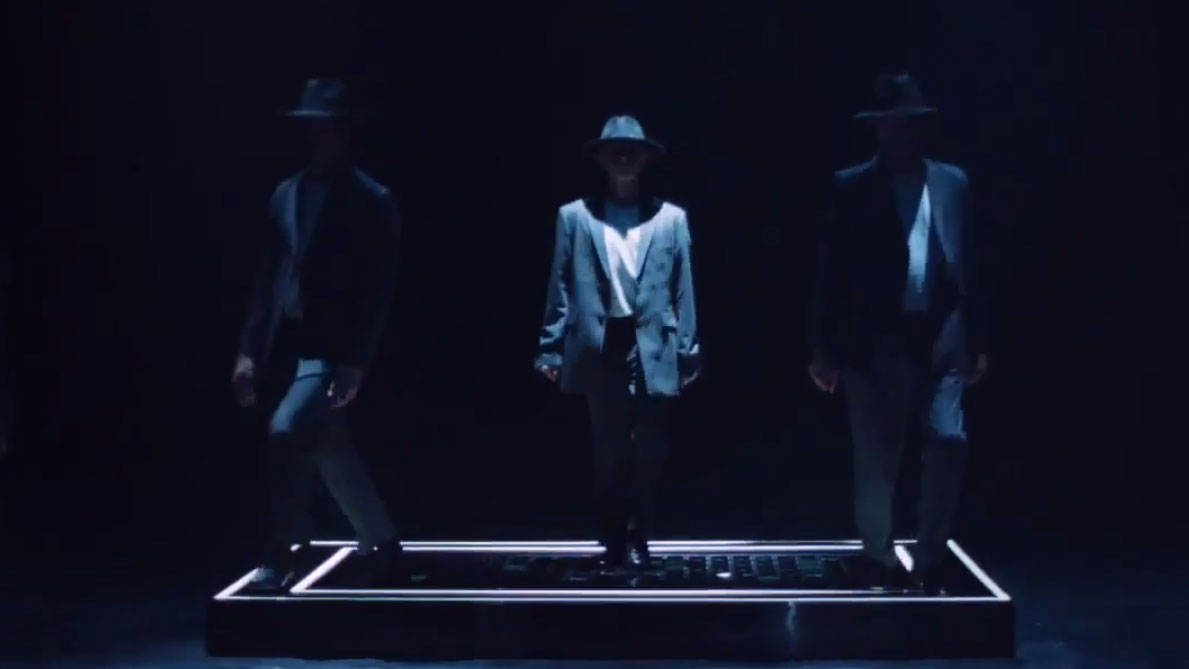
We’re seeing some people tap dancing on Redmi Note 10 Pro phones now. Why? No idea.
Well, slightly we have an idea: it’s to show how protective Corning Gorilla Glass Victus is.
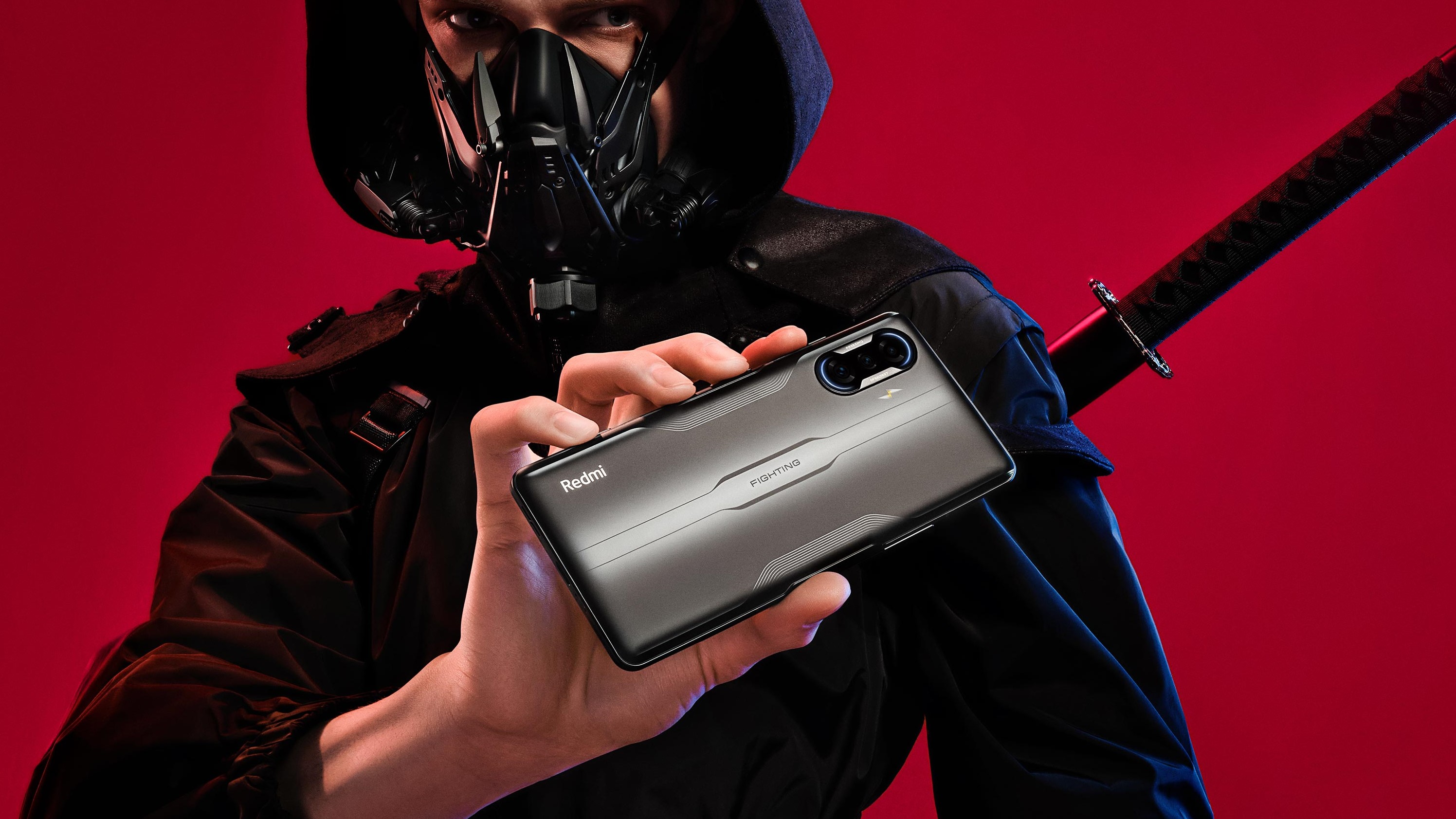
There’s an advert playing for the Redmi K40 Gaming Edition, which never got a global launch. In particular, we’re seeing a Bruce Lee version of the phone which is yellow with a black stripe, and it’s certainly got a striking appearance.
This is just one of many handsets from Redmi which doesn’t launch outside China, but we’re not expecting the Redmi Note 11 to be like that.
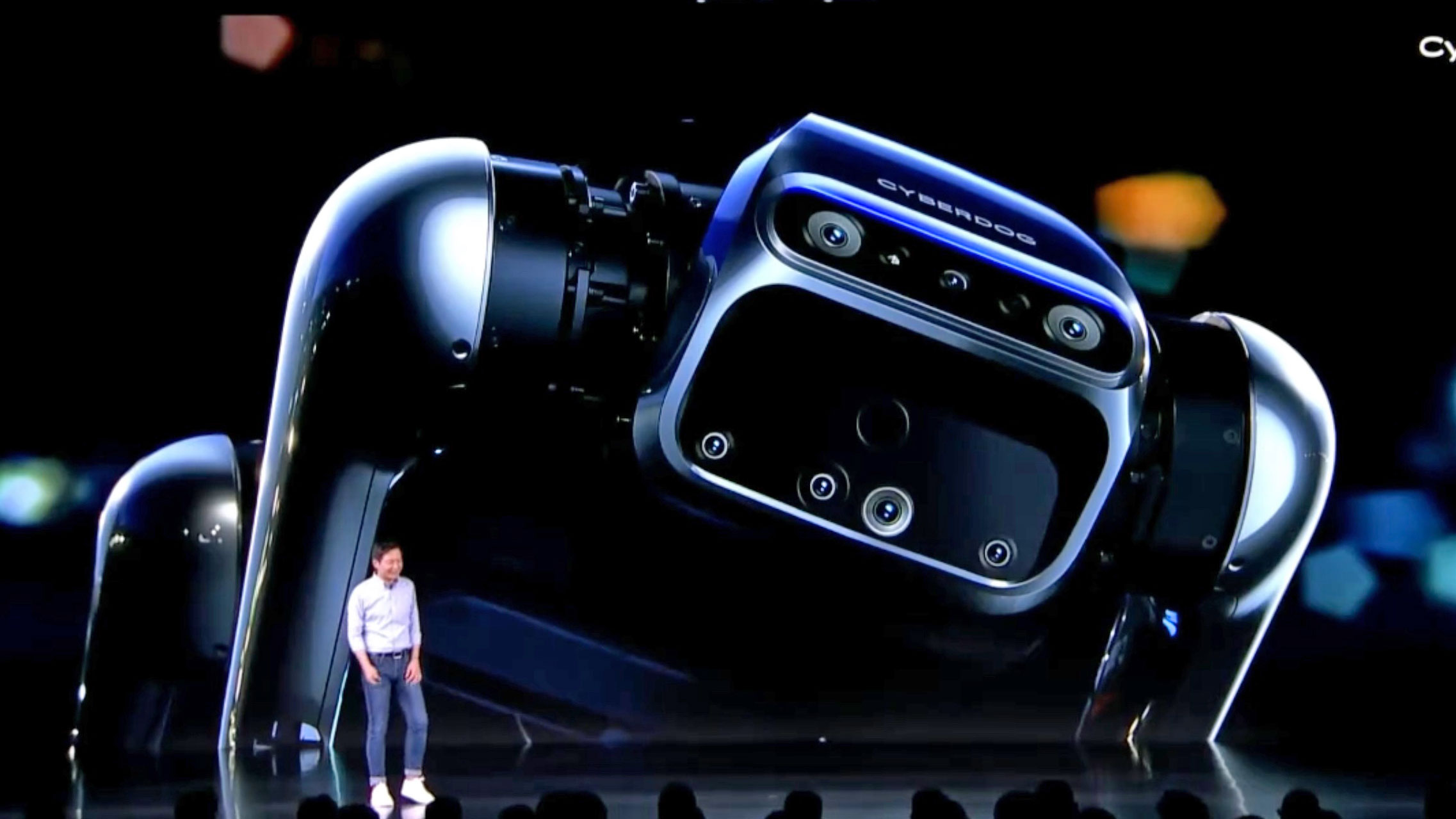
The video playing right now is just showing off various Redmi products, including its laptop and other phones. We even got a mention of Xiaomi’s CyberDog (pictured above) crossing a street.
It’s always surprising how big of a product ecosystem these Chinese tech brands have in their home country, that never launch outside the country. I’d love to have a fully-kitted out smart home. I’d also like to own a home at all…
Half an hour before the event properly kicks off, the Redmi live stream has kicked off. You can find it via the Weibo live stream function by clicking here.
As we said, this is a China-only event, so the speech and videos played won’t exactly be in English. However lots of the features will be easy to understand – a big outline of a phone with the text ‘2340 x 1080’ will obviously refer to resolution, for example.
Plus, we’ve covered enough of these events to work out what’s going on, even though we don’t speak Chinese (and barely speak English before our fifth coffee). So keep on this live blog for the important information.
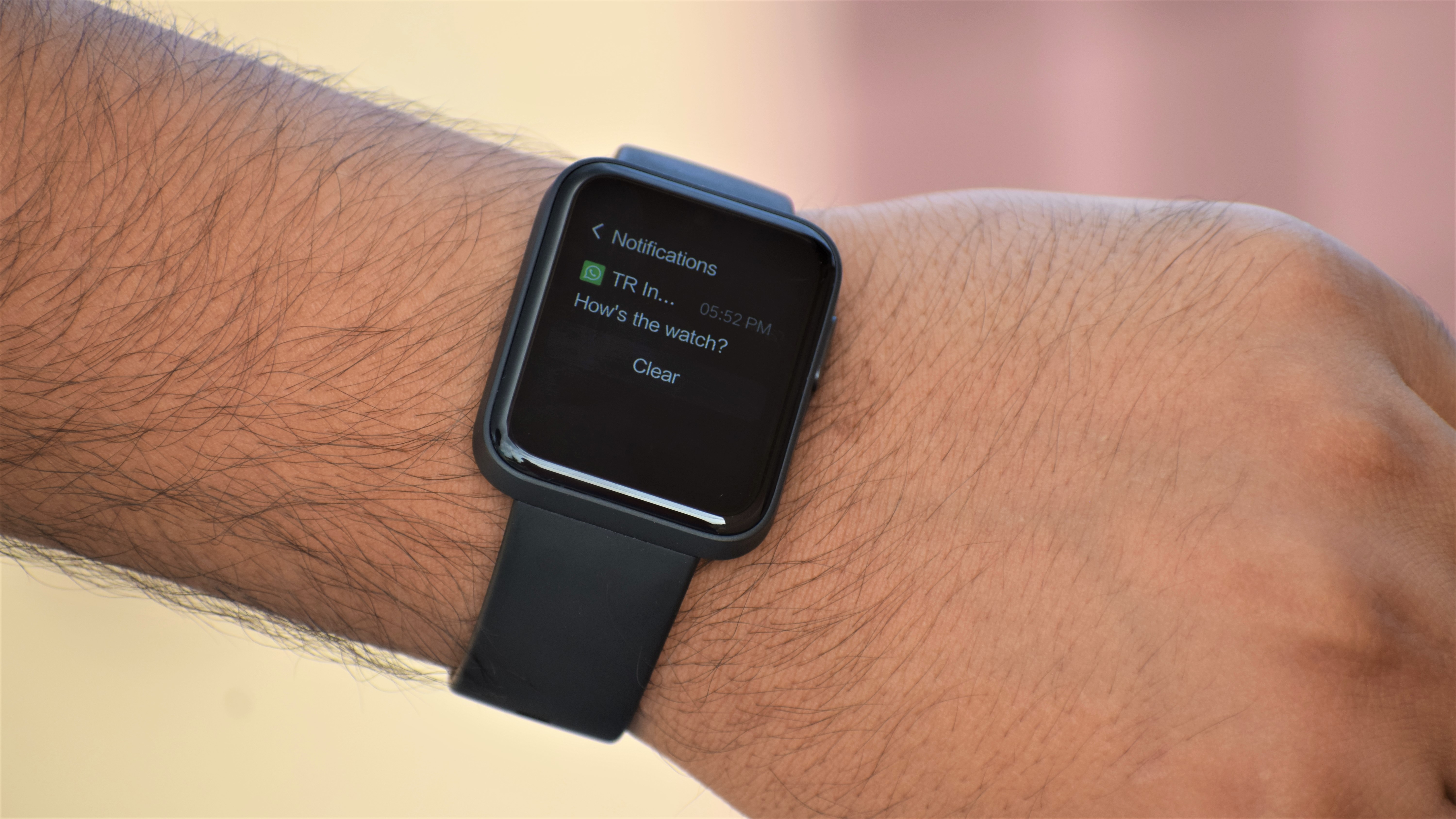
It sounds like some other devices are launching alongside the Redmi Note 11, and a successor to the Redmi Watch is expected to be one of them.
The original Redmi Watch was a super-affordable smartwatch with barebones specs and a square body, with a few key health and fitness features. We’d expect the successor to add some new tools and improve the specs.
We know this will be called the Redmi Watch 2, because Xiaomi itself confirmed it. The design looks similar, but there might be a bigger battery, sturdier build or changed strap material.
One hour left until the Redmi Note 11 launch kicks off – time to get ready!
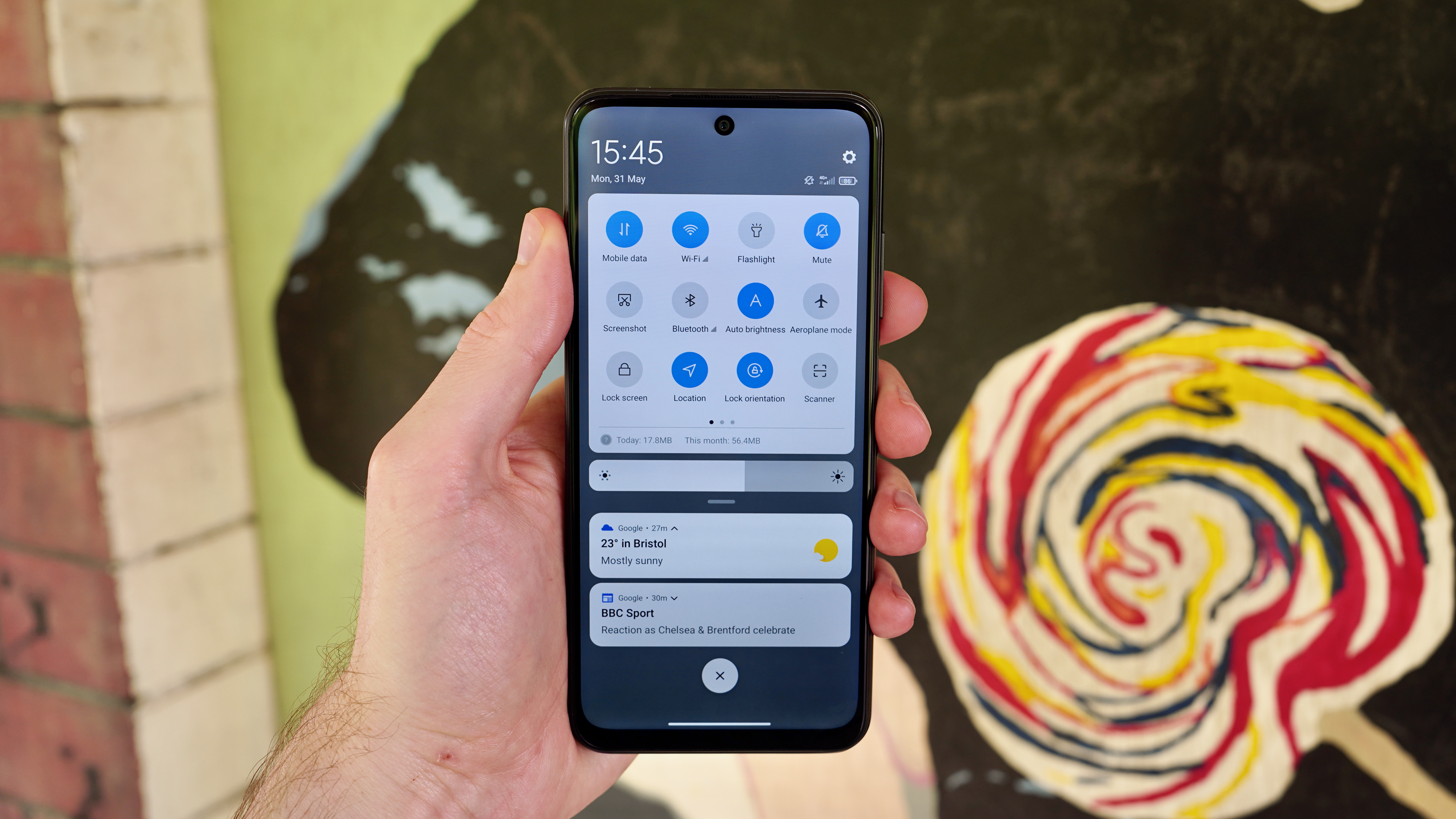
One intriguing leak we’ve heard for the Xiaomi Redmi Note 11 series, is that both phones could come with MediaTek chipsets, instead of Snapdragon which previous Redmi devices have used.
Qualcomm’s Snapdragon chips are used in most Android phones, but MediaTek is quickly growing in popularity, with more and more budget and mid-range devices getting its Helio or Dimensity processors.
Apparently the Redmi Note 11 will get the Dimensity 810 and the Pro will get 920, both mid-range chips. It’s worth noting, though, that other details included in this leak contradicted the aforementioned 108MP snapper rumor, so it might not be correct.
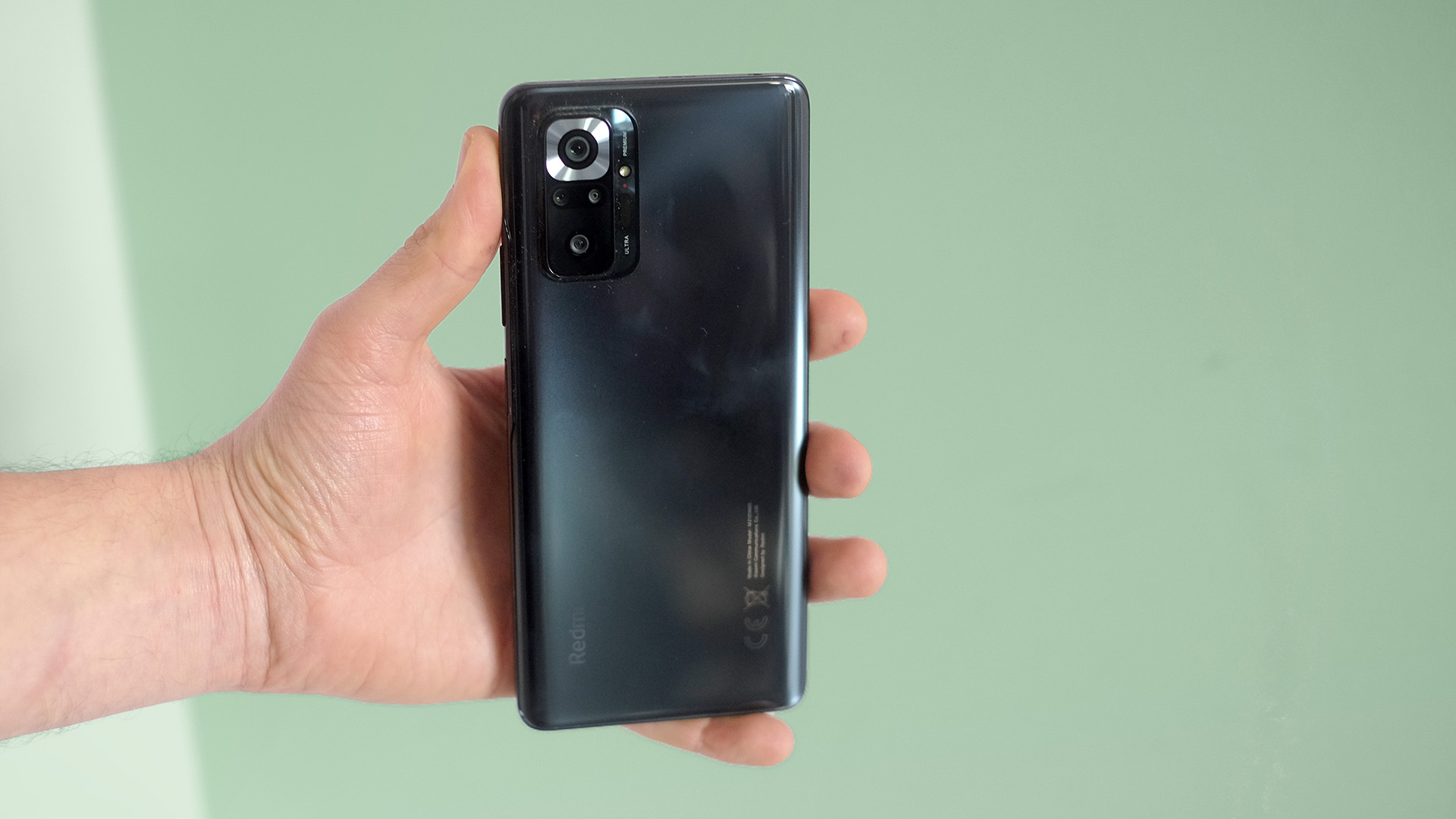
Something else we’ve heard about the Redmi Note 11 series is its camera spec: according to a leak, at least one of the phones will have a 108MP camera.
That’s not totally surprising, since the Note 10 Pro (pictured above) had one, but it shows Xiaomi is sticking with this super-high-res camera specs.
So it’s very likely the Note 11 Pro will have a 108MP snapper, but maybe the Note 11 will, as other brands are putting this sensor on cheaper and cheaper phones too.
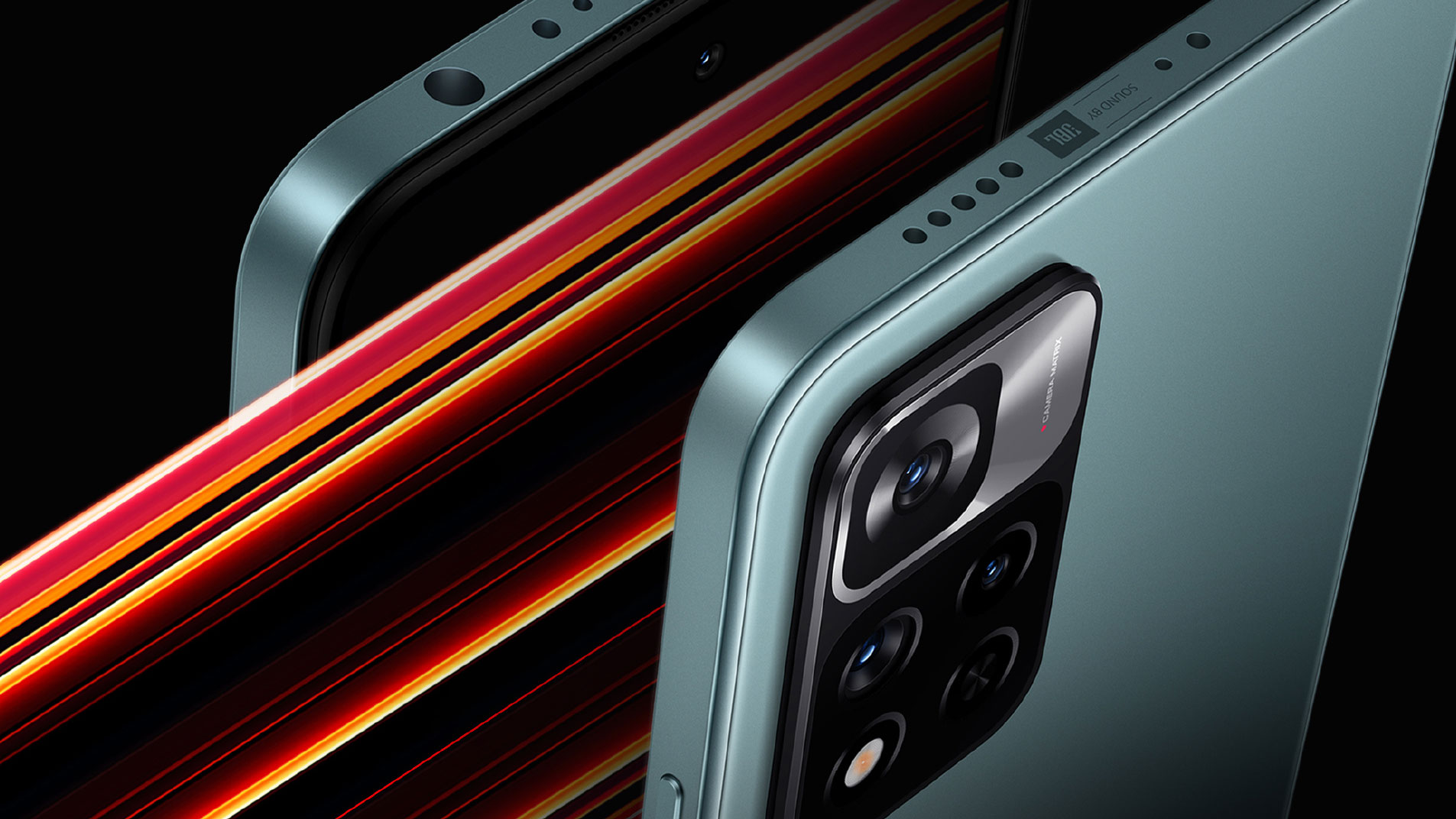
Despite the fact they haven’t launched yet, we’ve already heard quite a bit about the new Redmi Note 11 phones.
Take, for instance, their designs: Xiaomi has been teasing these phones for a few days solid, sharing plenty of snaps of the phones. So we know they’ll have iPhone-like flat edges, though similar appearances in other regards to previous Redmi Note phones.
The version of the device we’ve been shown is green, though there will likely be many more hues available.
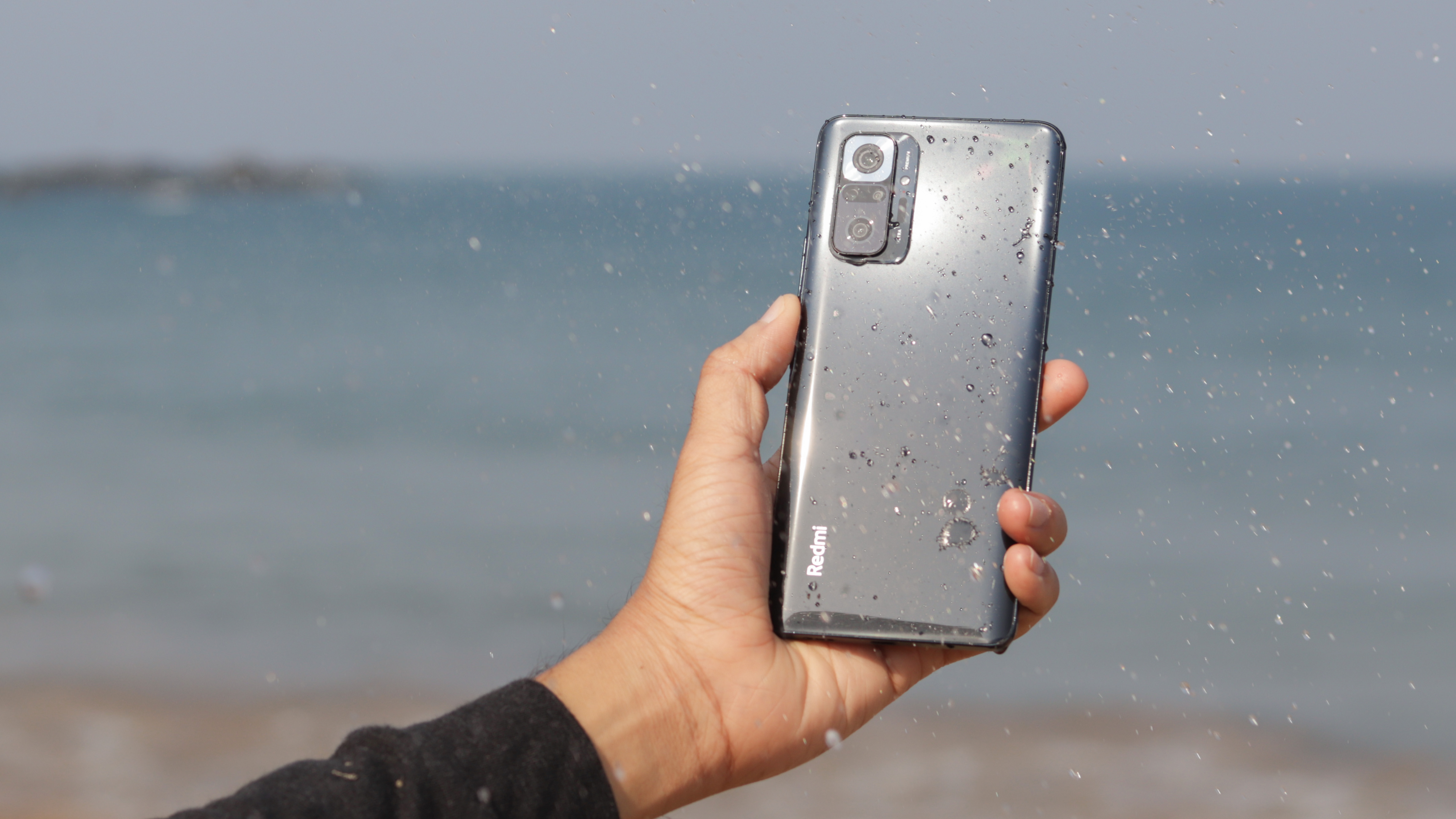
There’s still a bit of time to go until the Redmi Note 11 launch event kicks off, so you’ve got time to make a cup of coffee or six. Get ready for the event by checking out what we thought of the previous Redmi devices:
In our Redmi Note 10 Pro review we heaped praise on the phone, particularly its speakers, screen and long-lasting battery. Our big problem was that it didn’t have 5G, despite high specs across the board elsewhere.
We also tested the Redmi Note 10 5G, which as the name suggests did indeed have 5G. Our review was a little more mixed, praising its 5G connectivity, long-lasting battery life and classy design, but its limited camera array, iffy screen quality and mediocre performance left a lot to be desired.
TechRadar’s Indian bureau also tested the Redmi Note 10 and Note 10 Pro Max, giving both high scores for similar reasons. We were impressed by the display and battery life of both, with the low cost of both phones making it easy to appreciate them, though the cameras weren’t always as impressive.
